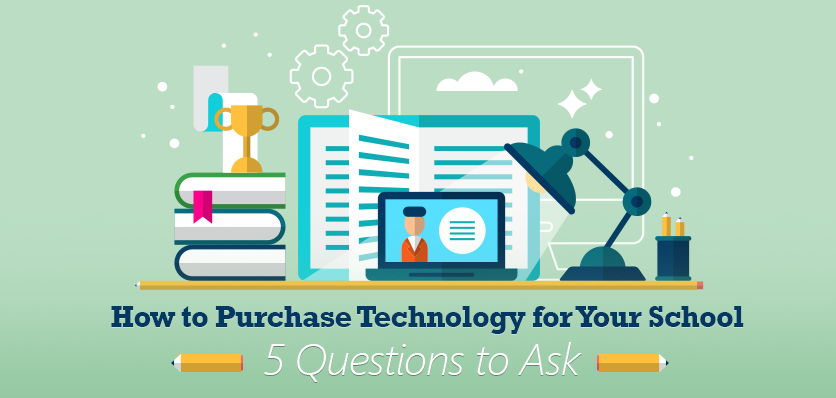
For these reasons, the process needs to be a partnership: between teachers, administrators and the purchasing function. It shouldn’t be left to any one of these groups. (You might even want to consult students and/or parents at certain points.)
This topic is an extensive one, but to get you started, this week’s blog covers five key questions schools should ask themselves when buying technology.
1- What do we need to buy?
The first consideration is also the simplest: be clear on what you need. This should include both checking the resulting ‘shopping list’ against your strategy, and using it to set a ballpark budget. Things you might want to include:
Once you have this list, you should interrogate it against some more detailed considerations:
2- Will hardware be student -or school- supplied?
‘Bring your own device’ (BYOD) is where students provide their own tablet, laptop or smartphone for schoolwork, rather than the school providing these. There are numerous pros and cons to this approach, making it a key decision to make strategically – and certainly well ahead of any purchasing stage.
3- Are we buying or leasing?
Like BYOD vs supplied, this is another key upfront decision. However the considerations here are more purely financial. Create detailed analysis for both options, and – if necessary – seek expert advice.
If you are thinking of buying, you will often need to factor in licensing. For example, if you plan buying Microsoft software, there are several licensing options specially designed for schools. Consider which offers you the best value for money, based on your school’s individual requirements.
4- Will it help to split things into buying and procuring?
‘Procurement’ is a strategic form of purchasing, involving more processes. For example, it requires a specification, plus evaluation criteria against which you can score the bids you receive. Procurement is best suited for large-scale or complex orders, for services rather than goods, and for occasions where you can expect prices to vary considerably from supplier to supplier.
However procurement takes time and money to manage. Sometimes it may be more sensible and cost-effective to simply ‘buy’ straightforward items – for example keyboards, mice and educational software – from a trusted supplier.
If you are procuring, these steps can help ensure a good standard of bids and a worthy final supplier:
5- Can you form a consortium with other schools?
The best way to drive down costs? Collaborate with other institutions to aggregate your spend. If you want to buy 50 laptops and another local school wants to buy 50 laptops, you’re likely to get a better quote together than if you both tender individually. If there are 10 other local schools all wanting to buy 50 laptops, you’re likely to get an even better quote. Same can be done when considering hosting costs for software or licenses.